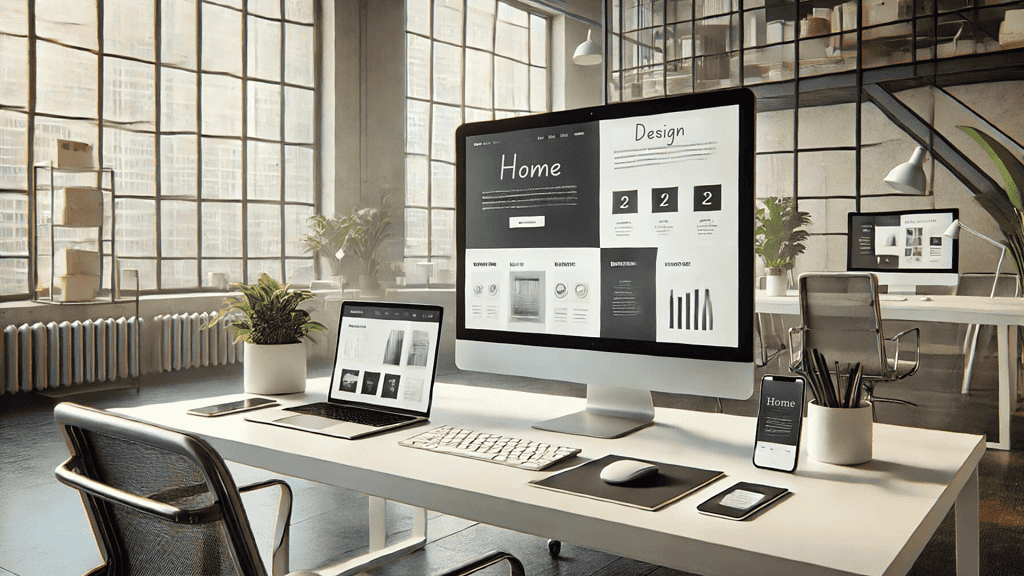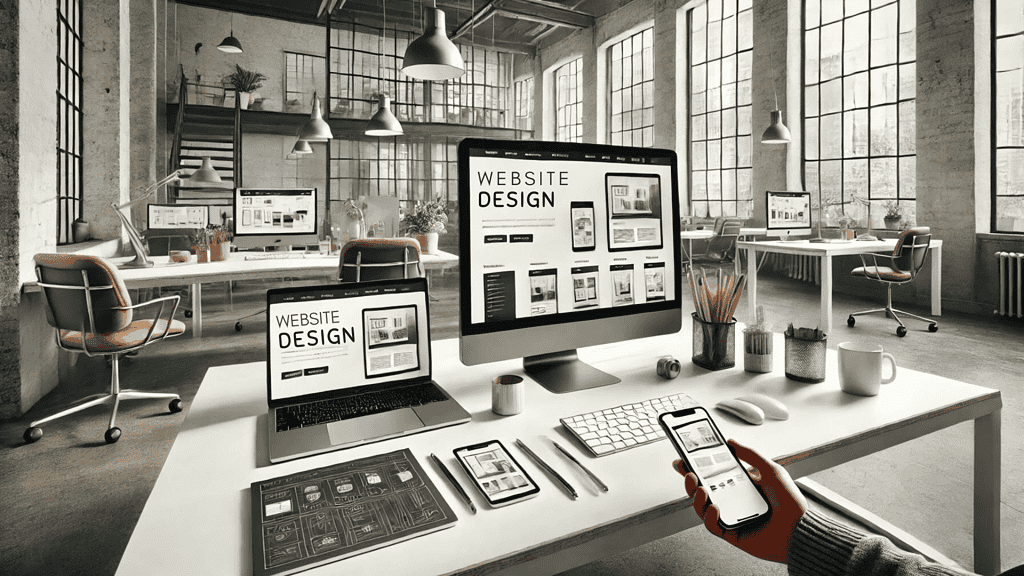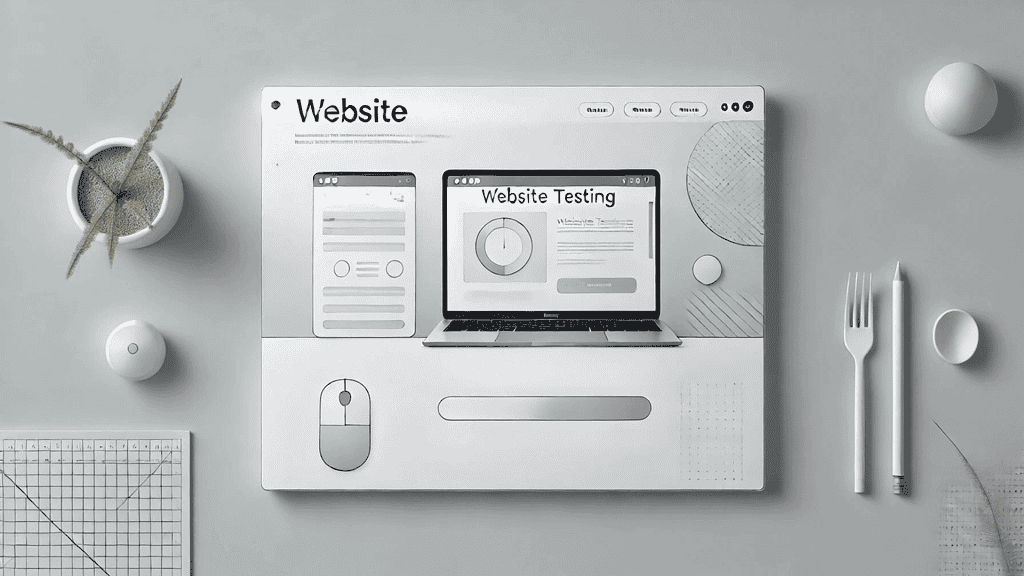Embracing Minimalism In Web Design: Less Is Indeed More
Reading time: 9 minutes
In the fast-paced world of modern web design, Elementor minimalism has emerged as a beacon of efficiency and elegance. This design philosophy, which centers on the idea of ‘less is more,’ prioritizes content and functionality by stripping away unnecessary elements. Embracing minimalism in web design can transform user experience and aesthetics.
The Core Principles of Minimalism
Minimalism in web design is rooted in a few core principles that guide the creation of clear, focused, and user-friendly interfaces. Understanding these principles is crucial for implementing a minimalist design effectively.
Clarity and Focus
One of the main advantages of minimalistic design is its ability to clear the clutter, allowing key content to take center stage. Without extraneous decorative elements, users can focus on what truly matters—your message, products, or services. This clarity enhances the user’s journey by reducing distractions and making navigation intuitive.
Minimalism allows designers to create a strong visual hierarchy, ensuring that users are naturally drawn to the most important parts of a webpage. By using ample white space, bold typography, and strategically placed elements, designers can guide users’ attention where it matters most. This approach not only improves usability but also enhances the overall aesthetic appeal of the website.

Enhanced User Experience
A minimalistic approach ensures faster loading times, which is a boon for user engagement and SEO. With fewer elements and simpler graphics, websites are optimized for performance across all devices, particularly mobile. This responsiveness meets the growing demand for quick and efficient online experiences.
In today’s digital age, users expect websites to load quickly and function smoothly on various devices. Embracing minimalism in web design caters to these expectations by reducing the number of elements that need to be loaded. This optimization not only improves loading times but also enhances the overall user experience, leading to higher engagement and lower bounce rates.
Aesthetic Appeal
Minimalism doesn’t mean mundane. It allows for striking designs through the use of bold typography, contrasting color schemes, and open space that can make visuals pop. This sophisticated simplicity appeals to modern aesthetics, offering a clean, contemporary look that stands out in a crowded digital landscape.
Minimalistic design often employs a limited color palette and simple geometric shapes to create a visually appealing and cohesive look. By focusing on essential elements and removing unnecessary clutter, designers can create a sense of elegance and sophistication that resonates with users. This approach aligns with the principles of modern web design, which emphasize functionality and user-centered design.

Consistency and Scalability
Consistency
With fewer design elements, maintaining consistency throughout the site becomes easier. This uniformity, from the navigation menu to the footer, creates a cohesive brand image that builds trust and recognition among users.
Consistency is a key aspect of user experience (UX) best practices. When users encounter a consistent design, they can easily navigate the site and understand how to interact with different elements. This predictability enhances usability and helps build a strong brand identity. By adhering to minimalistic principles, designers can ensure that their websites remain consistent and user-friendly.
Scalability
Minimalistic design scales well as your content grows or changes. With a solid, streamlined foundation, it’s easier to maintain and update the website without having to overhaul crowded or complex layouts.
As websites evolve and new content is added, maintaining a minimalist design ensures that the site remains clean and organized. This scalability is crucial for businesses that need to regularly update their websites with new products, services, or information. By starting with a minimalistic design, designers can create a flexible framework that can adapt to future changes without compromising the overall user experience.
The Role of Modern Web Design Software
To achieve minimalism effectively, web designers must use the best web design software available. These tools offer features that streamline the design process and ensure adherence to minimalistic principles. Here’s how modern web design software supports minimalistic design:
Design Efficiency
Modern web design software provides templates and design systems that are already aligned with minimalistic principles. This allows designers to focus on customization rather than building from scratch, saving time and ensuring consistency.
Many of the best web design software options, including Elementor, come with pre-built templates and design systems that follow minimalistic principles. These tools help designers create clean and cohesive layouts without spending excessive time on manual design work. By leveraging these resources, designers can maintain consistency and focus on delivering high-quality content.

UX Best Practices and UX Design Principles
Minimalistic design naturally incorporates many UX best practices and UX design principles. For instance, a simple, uncluttered interface enhances usability by making it easier for users to find what they need quickly. Additionally, intuitive navigation and responsive design are integral components of both minimalism and user-centered design.
Incorporating UX design principles into minimalistic design ensures that websites are not only visually appealing but also highly functional. By focusing on user needs and preferences, designers can create interfaces that are intuitive and easy to navigate. This alignment with UX best practices helps improve overall user satisfaction and engagement.
User-Centered Design
User-centered design is a fundamental aspect of both minimalism and modern web design. By prioritizing the needs and preferences of users, designers can create websites that are not only aesthetically pleasing but also highly functional. This approach ensures that every element on the website serves a purpose and enhances the overall user experience.
User-centered design involves understanding the target audience and creating designs that cater to their needs. By incorporating user feedback and conducting usability testing, designers can ensure that their minimalistic designs are effective and user-friendly. This focus on the user helps create a positive and engaging experience that drives customer satisfaction and loyalty.

Implementing Minimalism: Practical Tips
Prioritize Content
In a minimalistic design, content is king. Ensure that your content is clear, concise, and valuable to your users. Avoid cluttering pages with unnecessary text or images. Instead, use white space strategically to highlight important information and guide users’ attention.
Prioritizing content involves creating a clear hierarchy that guides users through the website. By using headings, subheadings, and bullet points, designers can make it easier for users to scan and find the information they need. This approach aligns with UX best practices and enhances the overall user experience.
Simplify Navigation
Navigation should be straightforward and intuitive. Use simple, clear labels for your menu items and ensure that users can easily find what they are looking for with minimal clicks. A well-designed navigation system enhances user experience and keeps users engaged.
Simplified navigation involves organizing content into logical categories and using descriptive labels for menu items. This approach helps users quickly find the information they need and reduces frustration. By focusing on usability, designers can create a seamless navigation experience that aligns with UX design principles.
Use Contrasting Colors
While minimalism often employs a limited color palette, using contrasting colors can help important elements stand out. Bold contrasts can draw attention to calls-to-action, headings, and other critical components without overwhelming the user.
Contrasting colors can be used strategically to highlight key elements and guide users’ attention. By creating a visual hierarchy with color, designers can ensure that important information is easily noticeable and accessible. This approach enhances the overall usability and effectiveness of the website.
Optimize for Performance
Minimalistic designs are inherently faster due to fewer elements, but it’s still essential to optimize images, use efficient coding practices, and leverage modern web technologies to ensure your site loads quickly and performs well on all devices.
Optimizing for performance involves reducing file sizes, using efficient coding techniques, and leveraging caching and content delivery networks (CDNs). These practices help improve loading times and ensure that the website performs well on various devices. By prioritizing performance, designers can create a smooth and enjoyable user experience.
Test and Iterate
Even with a minimalistic approach, testing is crucial. Conduct usability tests to gather feedback from real users and make necessary adjustments. Continuous iteration ensures that your design remains effective and user-friendly over time.
Usability testing involves observing how users interact with the website and identifying any issues or areas for improvement. By gathering feedback and making iterative changes, designers can ensure that their minimalistic designs are optimized for user satisfaction. Embracing minimalism in web design through this continuous improvement process aligns with UX best practices and helps create a positive user experience.

Final Thoughts: The Future of Minimalism in Web Design
Minimalism is more than just a trend in modern web design; it is a reflection of a deeper understanding of user needs and preferences. By focusing on clarity, functionality, and aesthetics, minimalistic design creates websites that are not only beautiful but also highly effective.
Embracing minimalism involves using the best web design software, adhering to UX best practices, and implementing user-centered design principles. As the digital landscape continues to evolve, the principles of minimalism will remain a guiding light for creating engaging, efficient, and visually appealing websites.
Minimalistic design offers a blend of functionality and modern beauty that resonates with users today. By adopting minimalistic design principles, web designers can create more engaging, accessible, and memorable websites. This design approach proves that in the world of web aesthetics and usability, less can indeed be more.

In conclusion, embracing minimalism in web design is not just about reducing elements but about enhancing user experience and focusing on what truly matters. By leveraging Elementor and the best web design software, and adhering to UX design principles, designers can create websites that are both visually stunning and highly functional.
The future of web design lies in simplicity, clarity, and user-centered design, proving that less is indeed more. Explore the cutting-edge web design solutions offered by Owltek Solutions and see how we can elevate your online presence!
**This post contains affiliate links, meaning I may earn a small commission if you make a purchase through one of them. Rest assured, I only recommend products I truly love. Your support helps keep my creative business thriving — thank you!**

